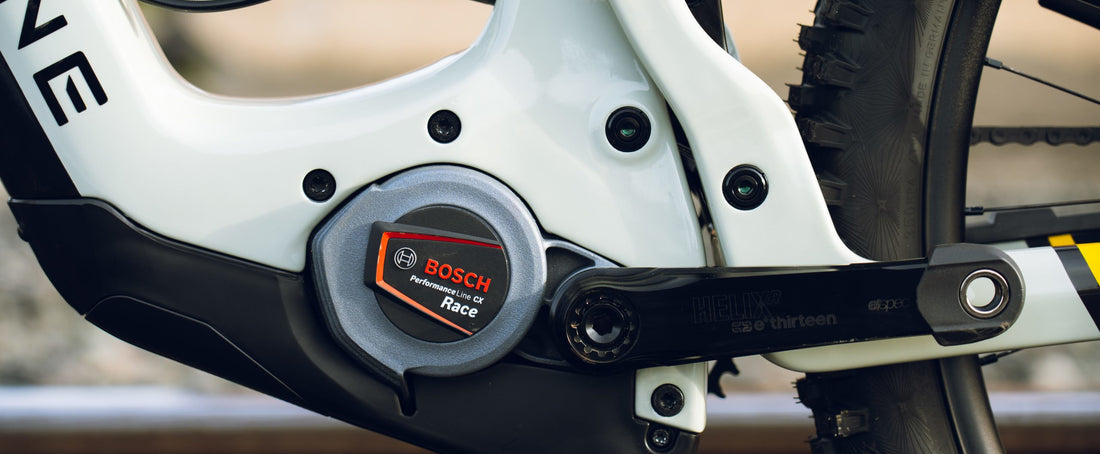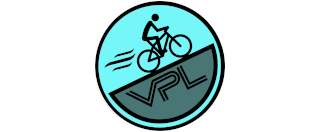
So this is your first time building a bike with a Bosch eBike System
Share
Whether you're a project manager building a hot new mass-market bike or a custom framebuilder jumping into eBikes for the first time, integrating a new concept into your design can be a daunting task. That is especially true when you're faced with the long catalog of eBike parts that Bosch offers. It's hard to know where to even start, but we'll go over a workflow in this post that should make your process more organized and accurate.
Terminology
- BES2: Bosch eBike System 2. Legacy system that will no longer be sold after June 2024. Aftermarket support and replacement parts for BES2 systems will be available until 2032.
- BES3: Bosch eBike System 3 (Smart System). The newest iteration of the Bosch ecosystem. Characterized by better communication between system parts, increased functionality, and connectivity to your smartphone.
- Max. Support Level. How much torque the drive unit will deliver, as a multiplier of the torque your legs are providing. For example, if the Drive Unit says 400% Max Support, it will deliver up to 4x times the torque you're putting into the pedals (to the rated maximum of the unit).
- Human Machine Interface (HMI). The point of interaction between you and a machine (including your eBike). Otherwise known as a display or a controller.
- Unified Frame Interface (UFI). This is the newest Drive Unit mounting standard; it is a simplified mounting system that all Drive Units will share. There are two drive units available now using this standard, both are the lightest motors that Bosch makes.
System Overview
There are 4 main components that you’ll need to choose to get your bike spec’d out:
- Drive Unit (DU)
- Battery
- System Interface
- Charger
All the other components in the catalog are necessary for installation (hardware, wires, sensors, etc.) or add-ons to enhance the user experience (different displays, anti-theft module, ABS, etc).
The general process for building a system spec
First!
What kind of a bike are you building?
The specific Drive Unit will be largely based on what kind of bike you're building and the performance you want. Building a cargo bike? Choose the Performance Line Cargo motor. Building a light eMTB? Choose the Performance Line SX motor. Building a full-power full-speed gravel bike? Choose the Performance Line Speed motor.
Check out the comparison table here: Bosch Drive Units (about halfway down the page).
The drive unit you select will then dictate which motor mount you’ll use (those are commonly known as nodes or cabinets). You’ll have to either make it or order a Gen 4 steel node from Framebuilder Supply or Bike Fab Supply.
The last consideration is the wheel speed sensor. That's a necessary input for the motor. If the frame is non-ferrous and you're running one of the UFI Drive Units, you can run the wireless speed sensor option. Otherwise you'll run a wired sensor, either to the non-drive side chainstay or dropout.
Second!
For batteries, you start with choosing the mounting style/location. There are three options.
- Frame mount (external - PowerPack Frame) Small builders typically choose this option for its ease of integration.
- Frame mount (internal downtube - PowerTube)
- Rack mount (external - PowerPack Rack) Very rare that these batteries are used.
Use the Bosch Range Calculator to figure out what kind of range you’ll get with your DU and the batteries on offer.
Use that information to choose the battery size (capacity) that best suits your needs. The mounting hardware will be dictated by the battery housing type and battery capacity.
Third!
The System Interface. This is the device that controls the whole eBike system; this will connect with your Drive Unit through a cable. The System Interface allows you to power on the bike, change the mode, and other things like turn on lights and connect to your smartphone.
There are three options (going from minimal display to full cycle computer display).
- System Controller (with Bluetooth Mini Remote)
- LED Remote
- Purion 200
You have the option of connecting a secondary display to any of the interfaces mentioned above. There's also a Smartphone Grip that will hold and charge your phone for you while you ride. Through the Flow app on your phone, you can access the full status of your eBike and other features not available on the built-in interfaces or displays.
Fourth!
Maybe the least exciting part, but it puts the e in eBike - the wall charger.
Do you want to charge all night overnight or faster during the day? There are two options (since you really can't change the voltage coming out of your wall).
- 2 Amp
- 4 Amp
The only other choice you'll need to make is the cord that plugs it into the wall.
N.B. Here's a fun calculation for figuring out how long it will take to charge your bike (assumes it's at 0% and you're taking it to 100%): Hours = battery capacity (Wh) / wall voltage * charger amperage
Last!
Now's the time to figure out your cable lengths and other details, including auxiliary modules.
Here are the accessory modules available.
- ABS - yup, just like on your car! The system will modulate the front brake to prevent lock-up. There are modes for every riding type, such as cargo, touring, city, performance MTB. Each profile has different priorities when it comes to how the front wheel should react.
- Bosch Connect Module (BCM) - a GPS and mobile-connected device that shows you where your bike is, acts as an anti-theft device, and allows you to use your phone as a key for the bike.
These are the critical cable lengths that you'll need to figure out.
- Battery to Drive Unit
- Battery to charging port (if not charging at the battery)
- Drive Unit to System Interface
- Speed Sensor (if not using a wireless option)
- Lights (if you're using lights)
- Auxiliary power (for 3rd party accessories such as e-shift or phone chargers)
Conclusion
Hopefully this workflow has provided you with a general sense of how you'll spec a Bosch eBike System to your new bike, whether it's a custom one-off build or a production run of a thousand bikes.
If you're interested in getting more specifics about Bosch systems, or are interested in ordering a system, get in touch with us!
